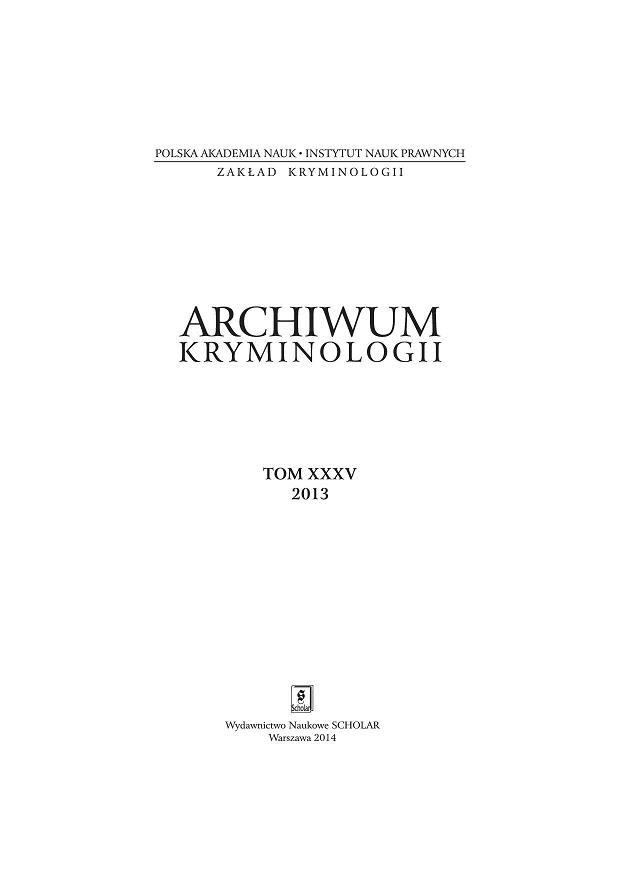Wizerunek ofiary handlu kobietami w krajowym orzecznictwie karnym na podstawie analizy wyroków w sprawach o handel ludźmi w latach 1997-2009
The image of women trafficking victimis in the polish judicial decisions based on judgements on human trafficking criminal cases between 1997 and 2009
Author(s): Maryla Koss-GoryszewskaSubject(s): Law, Constitution, Jurisprudence
Published by: Instytut Nauk Prawnych PAN
Keywords: WOMEN TRAFFICKING VICTIMS; HUMAN TRAFFICKING;
Summary/Abstract: The article presents results of an analysis on Polish courts' judgements passed in criminal cases between 1997 and 2009 concerning human trafficking, i.e. former Article 253§1 and 204§4 Penal Code, conducted with an aim to investigate the image of the party injured as a result of such crime. The research included 59 court cases concerning sexual abuse of women, in which a judgement of conviction (either final and binding or not) was passed. The aim of the research was to the reconstruct the process in which a victim of women trafficking is seen by judges, to analyse the language used by judges in dealing with the victims, and to check if there is a specific model or models in the manner the victims' image is seen by judges. As part of this research, an analysis of semantic fields and qualitative analysis were conducted. The conclusions from the former show that the language used by judges when referring to the crime victims is highly diversified: ranging from formal, official registers ('the injured party', 'women', 'witness'), to vernacular and hardly formal, or even vulgar ('white slaves', 'roadside hookers'). As long as the first of the above registers does not carry any judgemental aspect in describing victims of human trafficking, the other style proves how negative the image is: one of a prostitute or a naïve, reckless girl. The semantic field analysis showed that among the expressions referring to the victims, the ones suggesting that the women got what they deserved were predominant. This language contains an element of the victim's causative involvement, suggesting that the women had some part of the blame for the circumstances, or that the circumstances were not as threatening or traumatising. It is often emphasised that the victims themselves agreed to travel, or had had prostitution experience before. Interesting conclusions can be drawn from analysis of semantic field equivalents, or in other words, the expressions used in lieu of the word 'victim'. Two groups emerge from among them: one, negative judgemental language used towards the injured party, and two, neutral. In the former group expressions such as: 'subject of trade', 'social outcast', 'property', 'human merchandise', 'merchandise subject to', 'a working girl', 'ladies of the evening', 'girls' are found. A considerable portion of these expressions indicates that the human trafficking victims are seen as de facto prostitutes ('prostitutes', 'roadside hookers', 'ladies of the evening'). Another thing that draws attention is the register of the language, with examples of colloquial or even vulgar words being used, which is certainly improper in documents of such importance. The fact that judges used inverted commas when they opting for some of these expressions in writing cannot serve as an excuse.
Journal: Archiwum Kryminologii
- Issue Year: 2013
- Issue No: XXXV
- Page Range: 161-192
- Page Count: 32
- Language: Polish

